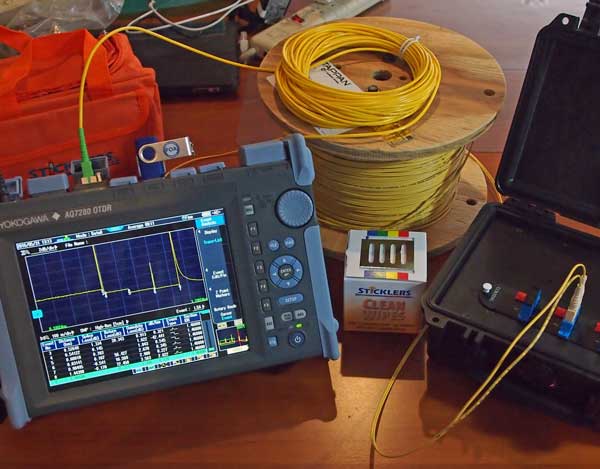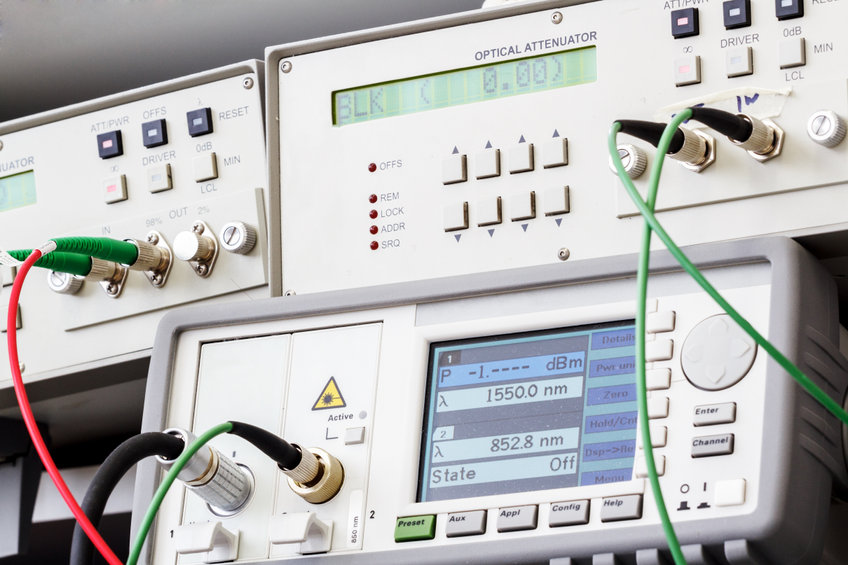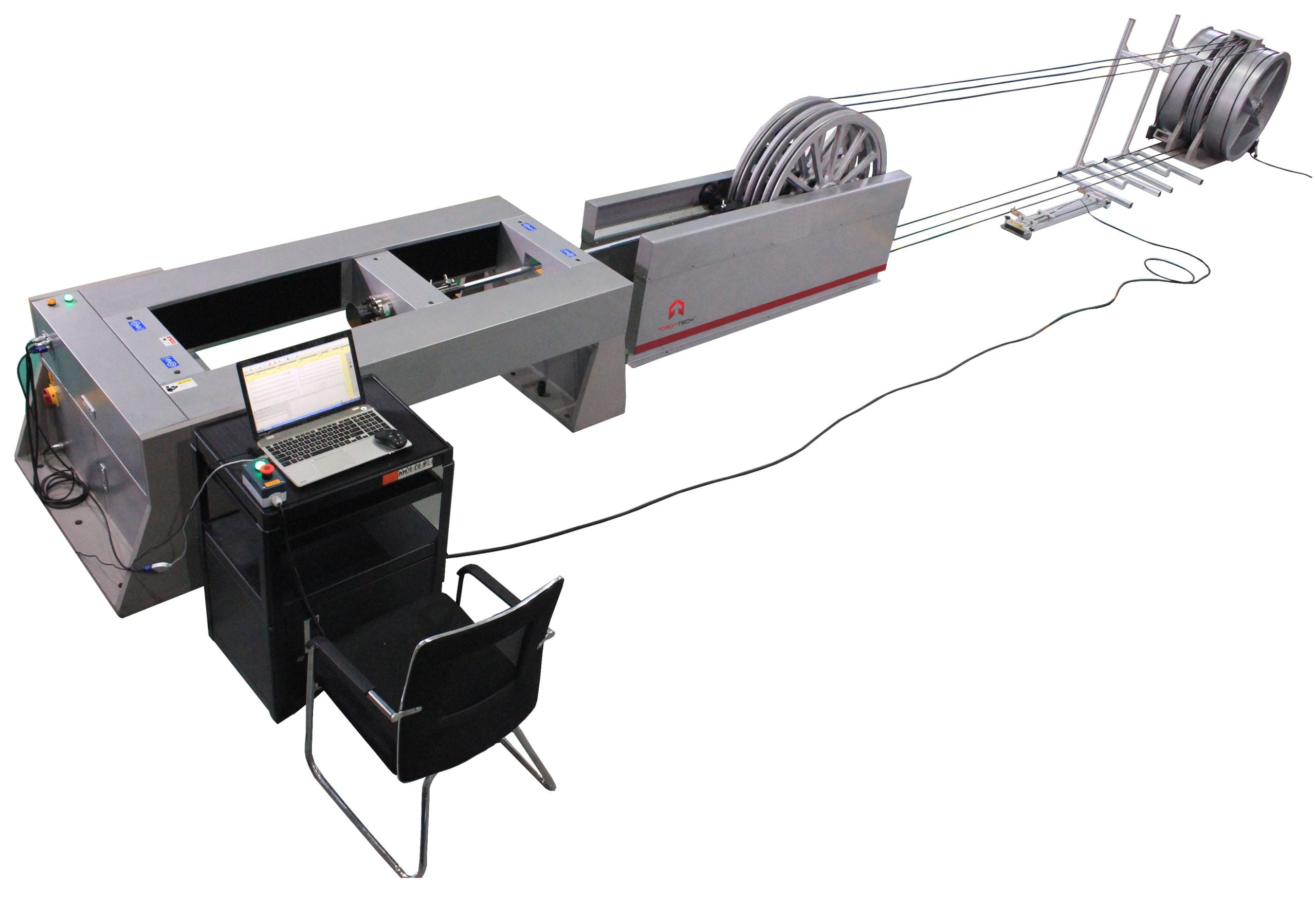Industries use fibre testing equipment to maintain product quality.
Industries use fibre testing equipment to maintain product quality.
Blog Article
Discover the Significance of Optical Fiber Screening in Modern Telecommunications
In the world of contemporary telecommunications, the value of optical fiber testing can not be overstated, as it acts as the backbone for making certain network reliability and performance. By executing normal testing protocols, operators can preemptively identify potential problems such as signal destruction, therefore safeguarding against disruptions that might show expensive. Advanced strategies like Optical Time-Domain Reflectometry play a pivotal duty in this process, yet many might neglect the wider effects of these methods. What are the certain benefits that routine screening deals, and just how might it shape the future landscape of telecoms?

Understanding Optical Fibre Screening
Optical fiber testing is a vital process in telecoms that makes sure the honesty and performance of fiber optic networks. This screening includes a range of treatments designed to examine the physical and practical attributes of optical fibers - fibre testing equipment. Trick specifications assessed consist of optical power loss, bandwidth capability, and mistake place, which are important for keeping high-quality communication links
The testing procedure usually involves the use of specialized equipment such as Optical Time-Domain Reflectometers (OTDR) and Optical Power Meters. OTDRs are used to identify and characterize faults, splices, and adapters within the fibre, while power meters determine the transmitted light signal toughness to identify performance.
Additionally, testing is carried out at numerous stages, including throughout installment, upkeep, and troubleshooting, to make sure that the network meets market criteria and functional demands. Compliance with requirements established by organizations like the International Telecommunication Union (ITU) and the Telecommunications Market Organization (TIA) is vital.
Benefits of Regular Evaluating
Normal testing of optical fibers returns many benefits that substantially enhance network dependability and efficiency. Among the main benefits is the very early detection of possible concerns, such as breaks or degradation in the fibre, which can result in pricey downtime if left unaddressed (optical fibre testing equipment). By recognizing these problems proactively, telecoms companies can reduce solution disruptions and guarantee regular connectivity for their clients
In addition, regular testing helps to preserve the honesty of signal quality. As optical fibres age, their performance can be impacted by variables such as ecological conditions and physical tension. Routine analyses enable for the tracking of signal loss and overall transmission effectiveness, making sure that the network operates at ideal levels.
One more substantial benefit is conformity with industry standards. Routine testing sustains adherence to regulatory demands, therefore alleviating legal and monetary dangers related to non-compliance. It boosts the general lifespan of the fibre framework by promoting prompt maintenance and repair services.

Usual Testing Methods
Testing optical fibres uses various techniques to guarantee the integrity and efficiency of telecoms networks. Among one original site of the most typical strategies is Optical Time Domain Name Reflectometry (OTDR), which analyzes the whole size of the fiber by sending a pulse of light and measuring the representations caused by imperfections or breaks. This approach supplies comprehensive info about the place and intensity of faults.
Another widespread approach is making use of Optical Power Meters, which determine the quantity of light transmitted through the fiber. This strategy helps figure out the loss of signal strength, ensuring that it fulfills sector requirements. Furthermore, Visual Fault Locators (VFL) are utilized to identify breaks or serious bends in the fibre by predicting a visible laser light right into the cable.
Insertion loss screening is additionally crucial, as it evaluates the loss of signal power resulting from connections and entwines within the network. The usage of Polarization Setting Dispersion (PMD) testing analyzes the impact of fibre qualities on signal honesty.
Each of these methods plays a crucial function in keeping the efficiency and reliability of optical fibre networks, inevitably contributing to seamless telecoms procedures.
Influence On Network Efficiency
The honesty and performance of optical fiber networks straight influence general network efficiency. In modern telecoms, the performance of data transmission relies heavily on the top quality of the optical fibres utilized. Any type of deterioration in the fibre's condition-- whether as a result of physical damages, contamination, or excessive flexing-- can lead to raised attenuation and signal loss, significantly impacting data honesty and speed.
Normal optical fibre testing is important to determine and fix prospective concerns before they manifest as network failures you can try this out or stagnations. Techniques such as Optical Time Domain Name Reflectometry (OTDR) and insertion loss screening enable technicians to measure the performance of fiber links properly. These examinations not just assess the physical problem of the fibres but additionally ensure compliance with market requirements, therefore securing the network's dependability.
In addition, a well-maintained optical fiber network adds to decreased operational prices and boosted consumer complete satisfaction, as end-users experience less disturbances and higher information prices. Ultimately, the emphasis on strenuous optical fibre screening practices acts as a keystone for sustaining robust telecommunications facilities, ensuring that company can meet the expanding demands for bandwidth and connectivity in today's digital age.
Future Fads in Checking
As we look in advance, innovations in technology are poised to reshape optical fiber testing in telecommunications. The rise of automation and expert system (AI) read more is expected to improve the efficiency and precision of testing processes. Automated testing systems can conduct extensive assessments with very little human intervention, substantially lowering the potential for mistakes and quickening time-to-deployment.
Additionally, the combination of maker knowing algorithms will certainly make it possible for predictive upkeep, allowing network suppliers to visualize prospective issues before they intensify right into failures. This aggressive technique not only enhances network integrity yet also enhances operational prices.
An additional arising pattern is the growth of mobile testing gadgets that provide real-time analysis - robotic vision. These gadgets will equip professionals to do on-site diagnostics swiftly, helping with quicker resolutions and improving service quality
The development of 5G networks even more demands the advancement of testing methodologies. As data transfer needs increase, standard screening methods may no longer are adequate. Ingenious services such as optical time-domain reflectometry (OTDR) and advanced spooky evaluation will come to be vital in ensuring the stability and efficiency of high-speed connections.

Conclusion
In verdict, optical fiber screening is crucial for guaranteeing the honesty and integrity of modern-day telecommunications networks. Normal testing techniques not just aid identify prospective concerns such as signal loss and mistakes yet also add to improved network efficiency and customer satisfaction. As the need for seamless connectivity remains to grow, the adoption of advanced testing approaches will play an essential role in keeping high-quality network standards and supporting the developing landscape of telecoms.
Report this page